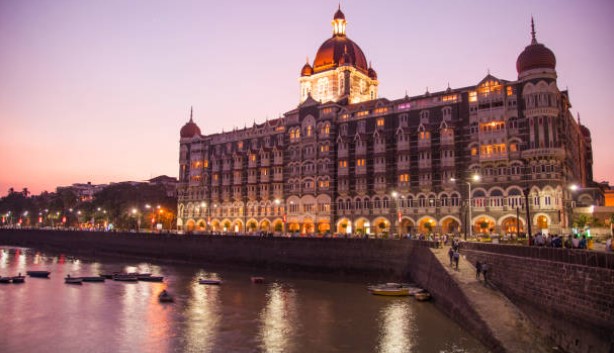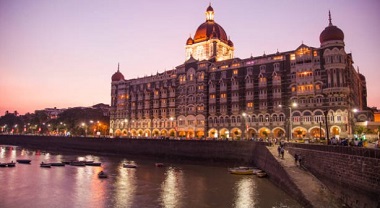The Implications of Intellectual Property Laws in the Tourism Industry
Intellectual property rights are statutory rights given to creators, inventors, and artists. Black’s Law Dictionary defines intellectual property as “a commercially valuable product of the human intellect, in a concrete or abstract form such as a copyrightable work, a protectable trademark, a patentable invention, or a trade secret.” The purpose of Intellectual Property Rights is to ensure that sufficient recognition is given to the creator’s work and skills, subsequently stimulating innovation and creativity in the country.
In 2021, the global travel and tourism sector contributed over 5.8 billion USD to the GDP. Many nations have been investing in laws and programmes for the growth of travel and tourism because of how lucrative this business is. The Tourism industry is a service-oriented industry, however, is not clearly markable and includes various other services within it such as travel, accommodation, airline industry, entertainment, restaurants etc. The World Tourism Organization reports that the volume of commerce in the tourism industry has been increasing rapidly and is currently comparable to or even surpasses that of exports of food, vehicles, and oil. It asserts that for many developing countries, tourism has become one of the major sources of income.

Trademarks refer to an identifiable phrase, word, or symbol or a combination of these that represents a particular product or service and differentiates it with another product or service. Trademarks helps in the prevention of likelihood of confusion with an existing trademark. The brands need to identify the Class under which they can register their trademark, and this is done through the NICE Classification adopted by India.
Due to its architectural significance, the Taj Mahal Palace Hotel in Mumbai Taj Hotel Mumbaiwas the first hotel to register an image trademark for its structure under the Trademark Act, 1999. A trademark was granted for the hotel’s exterior Tower Wing and picture. The Sydney Opera House in Australia and the Eiffel Tower in Paris have both acquired trademarks along similar lines. This trademark was obtained with the objective of protecting and highlighting the distinctiveness of the brand. Subsequently, the Indian Hotels Company Limited who is the owner of the Hotel stated that any artist or company who wants to feature the facade of the Taj that has been trademarked has to obtain a permission from the company and if such a permission is granted, they are required to also pay a fee as determined by the owner for the commercial use of trademarked structure. Therefore, by taking this step, the company is maintaining its unique identity and generating more revenue through their Intellectual Property.
Well-known hotel chains and eateries are also taking action to protect their brand through intellectual property tools like trademarks. For example, Oberoi Hotels Pvt. Ltd. has registered its wordmarks “Oberoi,” “Oberoi Residencies,” and “Oberoi Spa,” and Radisson Hotels International Inc. has registered several trademarks.
Copyright in the Tourism Industry
With the rise in the popularity of social media and networking, copyright becomes particularly relevant. The players in the tourism industry have started relying on social media and other digital platforms to promote and advertise their goods and services.
The laws governing copyright cover a variety of materials used in the tourism sector. The content posted on the websites of the tourism ministeries of various nations, the content on various online reservation and booking platforms, etc. are a few examples. The scope of Copyright protection also extends to photographs and audiovisual works related to the history, culture, and heritage of the nation that were produced by the relevant ministry. The assets held by organisations like museums are also shielded by the copyright law. It is only through licensing and other similar methods, the images of the work that are displayed and stored at these institutions can be used.
IP Branding: Certification marks and GI
The dichotomy between branding and Intellectual Property (IP) Law has been a significant one. Collective marks have also been used successfully in the tourism business. The term “Logis de France” is a registered trademark of the Fédération Nationale des Logis de France, an association of independent hoteliers united to promote privately operated hotels in rural settings under the same name. Similarly, Geographical indications have also become a development engine for agri-tourism by promoting tourism in rural areas where agriculture is emphasized. They may be part of an umbrella brand that applies to an entire region, or they may be an independent and stand-alone brand known as the destination brand. The wine industry was the first and best example of such tourism. Individual enterprises are not the only ones interested in establishing a distinct market presence but cities, regions, and even countries may use the IP system to develop a distinct identity. Recent efforts to brand locales, also referred to as “destination branding,” are examples of cities or regions making an effort to generate a certain appeal that will resonate with tourists. They have done this by relying on a trademark, whether in the form of a registered logo or slogan. In the tourism industry, having a memorable and appealing tagline that is also protected is crucial since it serves as the foundation for building a brand and defining its identity. For example, the trademark owned by New York has gained a lot of popularity over the distinctive cityscape, cloud-piercing spires of the Empire State and Chrysler Building, Manhattan’s grid, Manhattan cocktails, music, hip-hop, pizza, and cheesecake of New York are all represented by this logo, which has achieved astronomical popularity.
Conclusion
Our nation and several of its states have taken a step toward destination branding using the Intellectual Property Mechanism. Before achieving unimaginable heights, there is still a long way to go. As was mentioned, the intellectual property system offers some very potent weapons for raising individual competitors in the tourism industry. The knowledge economy rewards those who understand the potential of intangibles to differentiate and enhance products in an environment of intense competition. In order to benefit from the national and international intellectual property system, which provides a structured mechanism for protecting, managing, exploiting, and enforcing rights arising from a nation’s intangibles, the nation and its states must first articulate strategies of poignant and effective branding and advertising.
Author: Aanchal K Golecha, a student of Christ University (Bangalore), in case of any queries please contact/write back to us at support@ipandlegalfilings.com or IP & Legal Filing.



